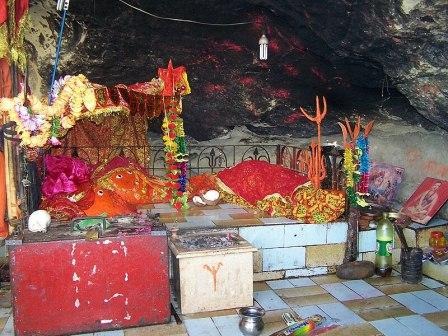Hinglaj Mata Mandir: The Sacred Shakti Peetha of Balochistan
TRENDING


Exploring the Spiritual Legacy of Hinglaj Mata Mandir
Deep within the rugged terrains of Hingol National Park in Balochistan, lies the Hinglaj Mata Mandir, a revered Hindu pilgrimage site known as one of the 51 Shakti Peethas. Located in Hinglaj, Lasbela district, along the banks of the Hingol River, this ancient temple holds immense significance in Shaktism. According to Hindu mythology, it is believed to be the sacred spot where the head of Goddess Sati fell, making it a powerful spiritual center. Known as Hinglaj Devi or Nani Mandir, the deity here is worshipped as a natural rock formation inside a mountain cavern, drawing over 250,000 devotees annually during the Hinglaj Yatra in April, the largest Hindu pilgrimage in Pakistan.
A Place of Deep Spiritual Significance
The Hinglaj Mata Mandir is more than just a temple—it’s a symbol of divine energy and devotion. In Shaktism, this Shakti Peetha is considered a place where devotees can connect with the goddess’s protective and wish-granting powers. During the Hinglaj Yatra, the air resonates with chants and rituals as pilgrims offer red powder, tie sacred threads, and perform prayers, believing that three days of worship here can absolve sins. The temple’s raw, natural setting, devoid of any formal structure, adds to its spiritual allure, making it a unique site of worship that reflects the unadorned essence of faith.
Interfaith Harmony at Its Core
One of the most remarkable aspects of Hinglaj Mata Mandir is its role in fostering interfaith harmony. Local Muslim communities, including Zikris and Sufis, hold the site in high reverence, often referring to it as Nani ki Mandir. During the annual yatra, they participate alongside Hindu pilgrims, offering items like red cloth and incense, a beautiful example of communal unity in Balochistan. On May 15, 2025, posts on X highlighted this harmony, with users sharing stories of Muslim locals supporting the pilgrimage, showcasing how the temple transcends religious boundaries and unites people through shared reverence.
A Cultural and Historical Gem
Situated 250 km northwest of Karachi, the Hinglaj Mata Mandir is not just a spiritual landmark but also a cultural bridge between communities in Pakistan. Its location within Hingol National Park adds a layer of natural beauty, with the surrounding desert and mountains creating a serene backdrop for worship. The temple’s history, tied to ancient Hindu traditions, and its continued relevance today make it a significant part of South Asia’s spiritual heritage, reflecting the enduring power of faith in a region marked by diversity.
Conclusion: A Symbol of Devotion and Unity
The Hinglaj Mata Mandir stands as a testament to the divine energy of Hinglaj Devi and the unity of diverse communities in Balochistan. As a Shakti Peetha, it holds a special place in the hearts of devotees, while its interfaith harmony offers a powerful message of coexistence. For those who hold this sacred site dear, the Hinglaj Mata Mandir remains a beacon of spirituality and cultural connection in the heart of Pakistan.